
CRTI's Technological Platforms
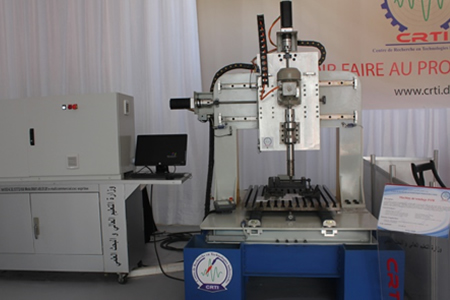
Industrial processes
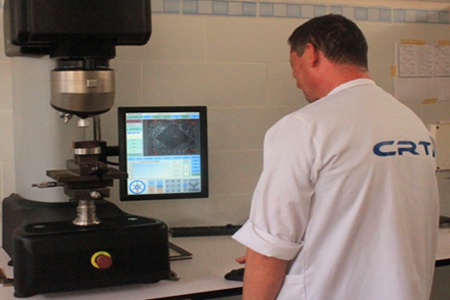
Mechanical testing
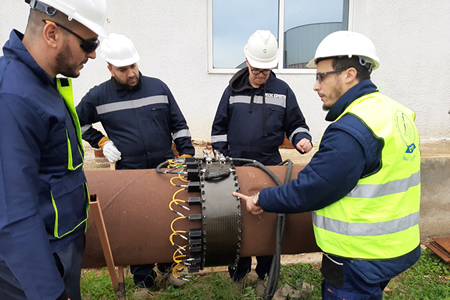
Advanced NDT Testing
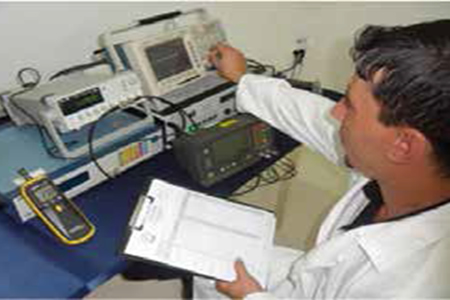
Calibration & Measurement

Material Characterization
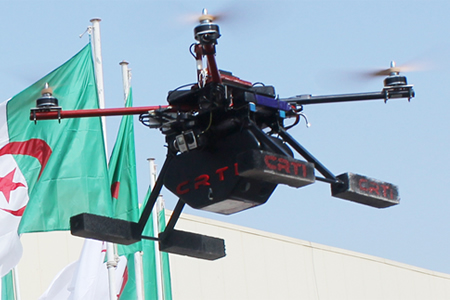
Intelligent Embedded Systems
Industrial processes
This platform takes stock of the deposit for the production of scientific proofs and the realization of some industrial machines. Based on the qualifications and capabilities of our engineers….
So, it is designed to develop, machines, patents and new technical processes to be applied in various industries. Accordingly, it is responsable of :
– Respond to socio economic needs through development of prototypes, models and systems associated with its domains, in addition of attaching a particular importance to technology transfer.
– Develop research themes in the field of electrical system engineering and control of processes.
– Develop themes directly into the field of materials for extreme use, mechatronics and industrial maintenance.
– Industrial technology maintenance;
– Modelling and simulation of systems and processes.
– Ensuring the expertise of industrial facilities and their staff training in order to improve production processes and increase their competitiveness.

Advanced NDT Testing
This Platform develops non-destructive methods using electrical, electromagnetic and optical processes.
These methods are applied to the characterization and evaluation of materials(structure ,defects,…) and coatings .
In addition, it examines and optimizes hardware and software relating to testing techniques using methods such as eddy currents, microwaves, Barkhausen Noise…. One aspect of characterization of nanostructures is performed by the hysteresis loops with high sensitivity.
Teams in this division are also interested in the characterization of different types of materials by techniques of vibrational spectroscopy, especially Raman and Infrared spectroscopy. To use these complementary techniques would determine very interesting optical properties (optical gap, refractive index and absorption coefficient …), and highlight the types of possible optical transitions. Another objective of our teams is to use different non-destructive optical techniques as for the characterization of electronic and optical properties and evaluation of materials and their interfaces, such as spectroscopic ellipsometry, optical microscope experimental methods and reflectometry, by examining the revelations observed by micro structural changes in molecular materials


Material Characterization
Microstructural heterogeneities occurring in a material at different manufacturing processes (elaboration, forming, welding …) often are sources of strain incompatibility and become sites for damage initiation. Knowing the “microstructure-properties” relationship, we can progress in the dimensioning to the rupture or predicting the lifetime of parts for various loading and operating conditions. A better understanding of the parameters that control the materials structure allows undertake on modeling their behavior in order to predict their useful service life.
Our missions serve to develop prediction methods of materials properties, in a way to provide helping tools to the definition of procedure’s operating modes to implementation of these materials and sizing the welded structures.
The role of this platform is to perform a multidisciplinary research on relationships «Processes – Microstructure – Usage Properties” of materials. The main research themes are about:
– Textures and microstructures evolutions during the fabrication processes of metallic alloys;
– The thermal, metallurgical and mechanical phenomena induced in materials during welding operations and their effects on the mechanical behavior of welded joint;
– Modeling of thermo-mechanical behavior of materials and assemblies.
– Study and master the phenomena and the mechanisms of corrosion in materials;
– Master the techniques of simulation of corrosion processes and their validation practices;
– Control and develop the anti-corrosion protection processes;
– Control and optimize the active protections systems against corrosion.

Mechanical Testing
Mechanical Testing Laboratory is created to support researchers to carry out their research works related to the themes developed at the centre and to meet the needs of professionals in the socio-economical sector. The workshop supports the study, analysis and testing of different materials. It has conventional and specific equipment for mechanical analysis at different trials (tensile test, hardness & microhardness test, fatigue test, bending test, torsion test, impact test) and extensimeter measurement or deformation analysis as well as stress measurements (digital image correlation).

Calibration & Measurement
The need to improve and ensure the performance of industrial products, especially oil installations, is nowadays a social and economic issue of high importance. Also, the increased demand for quality and risk management have encouraged the expansion of the scope of application of measurement methods and Non Destructive testing on activities of high security issues such as nuclear power and aerospace. Therefore, periodic calibration and verification of these measuring instruments and control has become a necessity.
It is in this context that our research centre has developed a workshop specifically dedicated to calibration and verification activities of the NDT equipment and other metrological instruments, and analytical materials activities. This workshop has a dual mission of research and providing services for the socio-economic sectors.
The workshop consists of two laboratories and a quality section:
– Laboratory of calibration and verification NDT
– Metrology Lab (Calibration laboratory by temperature measurements)
– Quality section


Intelligent embedded systems

CRTI’s “intelligent embedded systems” technological platform contributes to the creation of an exchange dynamics between the research centre structures and the different actors in the industrial sector. This pole constitutes a coherent set intended for research, education and technology transfer, particularly in the aeronautic field . The scientific objective of this platform is to develop methods for modeling, simulation, design and production of aeronautical products such as drones, small planes (designs and calculations) and all their embedded systems. From a technological point of view, this platform has as a mission to realize prototypes with autonomous navigation systems and information exchange with stations on earth (on land) to solve socio-economic problems.
This platform has two strongly complementary sections:
- Aeronautical structures section.
- Embedded systems and avionics section.
Structure Section
The specifications, Given by the customer, Developed within this platform, Generally our models are created with a data base that can attain for 1000 aircrafts.
Modeling 3D, using Solid Works, Autodesk inventor, Catia, 3D Reshaper Numerical simulation. For this step we must proceed to aerodynamic and structural simulations to approve our structure by using the following software:
- SolidWorks, Ansys, Nastron patron, Abacus Production , CNC cutting using the software MAC 3, we generate a G-code that will be introduced into the 4-axis hot-wire cutting machine and we obtain the mold.
- Composite laboratory: In this stage we proceed to the various steps of productions by composite materials, Draping, Grooming, Finishing
- Metrology test: Using the measuring arm, we proceed metrology tests in order to guarantee the conformity of the realized and the numerical model.
CAPACITY STENGTHENING FRAMEWORK
CNRST - 46 Boulevard Mohamed V, Alger
DGRSDT - 24 Mohamed Guassem, Alger
LRI-Annaba, Université Badji Mokhtar

![Science Technology and Innovation [STI-Portal]](https://ibtikar.info/wp-content/uploads/2019/08/STI-KT2.png)